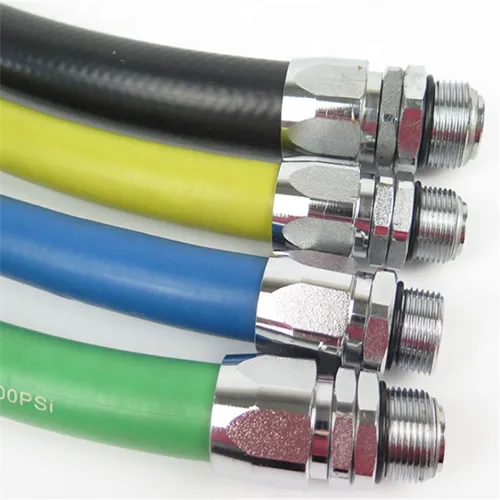335345435
Dec . 29, 2024 00:30 Back to list
hose adapter types
Understanding Hose Adapter Types A Comprehensive Guide
Hose adapters are essential components in various fluid transfer systems, providing a connection between hoses of different sizes or types. These fittings facilitate the transition of fluids in gardening, industrial, automotive, and plumbing applications. With a diverse range of hose adapter types available, choosing the correct one can greatly influence efficiency and reliability. This article dives into several common types of hose adapters, their uses, and key considerations for selecting the right adapter for your needs.
Common Types of Hose Adapters
1. Barbed Hose Adapters Barbed hose adapters are one of the most common types used in both residential and industrial settings. They feature ridges or barbs that grip the inside of a hose when inserted. This design creates a tight seal, minimizing the risk of leakage. Barbed adapters are typically made from materials like plastic or brass, making them suitable for various situations, including water, air, and fuel transfer. They are often used with hose clamps for added security.
2. Slip and Threaded Adapters Slip and threaded adapters are designed for applications requiring a more permanent connection. The slip type allows hoses to simply slide over the fitting, while threaded adapters utilize a male or female thread mechanism for a screw-on connection. These types are commonly found in plumbing applications where a tight seal is crucial to prevent leaks. It’s vital to ensure compatibility with your hose thread size when using these types of adapters.
3. Cam Lock (Cam and Groove) Adapters Cam lock adapters are popular in industrial settings due to their ease of use and quick connect/disconnect capabilities. They consist of two parts a male and a female component. The connection is secured by flipping cam levers over the groove of the female fitting. This design allows for rapid fluid transfer, making it ideal for applications like chemical handling and bulk liquid transfer. However, it’s important to note that cam lock adapters require compatible sizes and types to function properly.
4. Quick Disconnect Adapters Quick disconnect adapters are designed for applications where hoses need to be frequently connected and disconnected. These fittings provide a fast and simple way to change hoses without needing tools. Commonly seen in automotive and air compressor applications, quick disconnect adapters come in various configurations, including push-to-connect and pull-back designs. Ensure that the rating for pressure and flow matches your application to avoid issues during use.
5. Screw-on Adapters Screw-on adapters are threaded and can be attached to different types of hoses, making them versatile for various uses. These fittings usually have a rubber O-ring to create a watertight seal, ensuring that there is no leakage. They are commonly used in garden hoses, where users may want to attach additional watering tools or nozzles.
hose adapter types

Key Considerations When Choosing Hose Adapters
When selecting a hose adapter, several factors should be taken into account
- Compatibility Ensure that the adapter is compatible with the hoses you are using. This includes both size and threading type (if applicable). Mismatched adapters can lead to leaks or burst hoses.
- Material Depending on the application's requirements, choose the correct material for your adapter. Plastic adapters may work fine for light-duty hoses, while metal adapters are better suited for high-pressure or high-temperature applications.
- Pressure Rating Look for the pressure rating of the hose adapter to ensure it can handle the fluid dynamics of your specific application without failing.
- Ease of Use If you require frequent connections and disconnections, choose an adapter designed for quick changes to save time and effort.
- Purpose Finally, consider the purpose of the fluid transfer. Some adapters are intended for specific applications, like drinking water versus industrial chemicals, so consider the application to ensure safety and compliance.
In conclusion, understanding the various types of hose adapters and their applications is crucial for efficient fluid transfer. By carefully considering compatibility, material, pressure ratings, ease of use, and the specific needs of your application, you can select the right hose adapter to ensure reliable performance in any fluid transfer system.
-
Premium Soft Rubber Tubing: Flexible & Durable Hose Solutions
NewsAug.10,2025
-
Premium Distribution PTFE Hose | Flexible & Durable Solutions
NewsAug.09,2025
-
Premium 38mm Hydraulic Hose Factories | Direct & Reliable
NewsAug.08,2025
-
Premium Wire Braided Hydraulic Hose - Steel Reinforced for Durability
NewsAug.07,2025
-
Global Distribution PTFE Hose | Flexible & Steel-Braided
NewsAug.06,2025
-
Parker Teflon Hose Factories: AI-Enhanced Quality Solutions
NewsAug.04,2025



